preload 提供了一种声明式的命令,让浏览器提前加载指定资源(加载后并不执行),在需要执行的时候再执行。提供的好处主要是
将加载和执行分离开,可不阻塞渲染和 document 的 onload 事件
提前加载指定资源,不再出现依赖的 font 字体隔了一段时间才刷出
<!-- 使用 link 标签静态标记需要预加载的资源 -->
<link rel="preload" href="/path/to/style.css" rel="external nofollow" as="style">
<!-- 或使用脚本动态创建一个 link 标签后插入到 head 头部 -->
<script>
const link = document.createElement('link');
link.rel = 'preload';
link.as = 'style';
link.href = '/path/to/style.css';
document.head.appendChild(link);
</script>
Link: <https://example.com/other/styles.css>; rel=preload; as=style
如我们常用到的 antd 会依赖一个 CDN 上的 font.js 字体文件,我们可以设置为提前加载,以及有一些模块虽然是按需异步加载,但在某些场景下知道其必定会加载的,则可以设置 preload 进行预加载,如:
<link rel="preload" as="font" href="https://at.alicdn.com/t/font_zck90zmlh7hf47vi.woff" rel="external nofollow" rel="external nofollow" rel="external nofollow" rel="external nofollow" rel="external nofollow" rel="external nofollow" > <link rel="preload" as="script" href="https://a.xxx.com/xxx/PcCommon.js" rel="external nofollow" > <link rel="preload" as="script" href="https://a.xxx.com/xxx/TabsPc.js" rel="external nofollow" >
目前我们支持的浏览器主要为高版本 Chrome,所以可放心使用 preload 技术。 其他环境在 caniuse.com 上查到的支持情况如下:
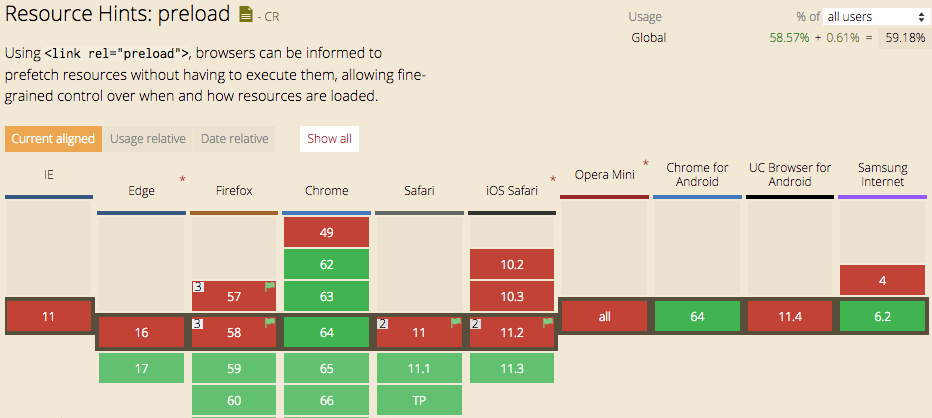
在不支持 preload 的浏览器环境中,会忽略对应的 link 标签,而若需要做特征检测的话,则:
const isPreloadSupported = () => {
const link = document.createElement('link');
const relList = link.relList;
if (!relList || !relList.supports) {
return false;
}
return relList.supports('preload');
};
preload 是告诉浏览器页面必定需要的资源,浏览器一定会加载这些资源;
prefetch 是告诉浏览器页面可能需要的资源,浏览器不一定会加载这些资源。
preload 是确认会加载指定资源,如在我们的场景中,x-report.js 初始化后一定会加载 PcCommon.js 和 TabsPc.js, 则可以预先 preload 这些资源;
prefetch 是预测会加载指定资源,如在我们的场景中,我们在页面加载后会初始化首屏组件,当用户滚动页面时,会拉取第二屏的组件,若能预测用户行为,则可以 prefetch 下一屏的组件。
使用 preload 前,在遇到资源依赖时进行加载:

使用 preload 后,不管资源是否使用都将提前加载:

可以看到,preload 的资源加载顺序将被提前:
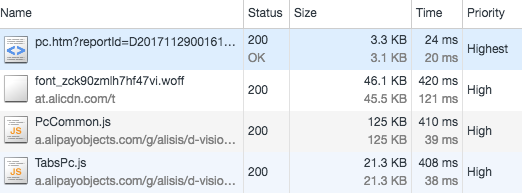
使用 preload 后,Chrome 会有一个警告:

如上文所言,若不确定资源是必定会加载的,则不要错误使用 preload,以免本末倒置,给页面带来更沉重的负担。
当然,可以在 PC 中使用 preload 来刷新资源的缓存,但在移动端则需要特别慎重,因为可能会浪费用户的带宽。
preload 和 prefetch 混用的话,并不会复用资源,而是会重复加载。
<link rel="preload" href="https://at.alicdn.com/t/font_zck90zmlh7hf47vi.woff" rel="external nofollow" rel="external nofollow" rel="external nofollow" rel="external nofollow" rel="external nofollow" rel="external nofollow" as="font"> <link rel="prefetch" href="https://at.alicdn.com/t/font_zck90zmlh7hf47vi.woff" rel="external nofollow" rel="external nofollow" rel="external nofollow" rel="external nofollow" rel="external nofollow" rel="external nofollow" as="font">
使用 preload 和 prefetch 的逻辑可能不是写到一起,但一旦发生对用一资源 preload 或 prefetch 的话,会带来双倍的网络请求,这点通过 Chrome 控制台的网络面板就能甄别:

若 css 中有应用于已渲染到 DOM 树的元素的选择器,且设置了 @font-face 规则时,会触发字体文件的加载。 而字体文件加载中时,DOM 中的这些元素,是处于不可见的状态。对已知必加载的 font 文件进行预加载,除了有性能提升外,更有体验优化的效果。
在我们的场景中,已知 antd.css 会依赖 font 文件,所以我们可以对这个字体文件进行 preload:
<link rel="preload" as="font" href="https://at.alicdn.com/t/font_zck90zmlh7hf47vi.woff" rel="external nofollow" rel="external nofollow" rel="external nofollow" rel="external nofollow" rel="external nofollow" rel="external nofollow" >
然而我发现这个文件加载了两次:



原因是对跨域的文件进行 preload 的时候,我们必须加上 crossorigin 属性:
<link rel="preload" as="font" crossorigin href="https://at.alicdn.com/t/font_zck90zmlh7hf47vi.woff" rel="external nofollow" rel="external nofollow" rel="external nofollow" rel="external nofollow" rel="external nofollow" rel="external nofollow" >
再看一下网络请求,就变成一条了。
W3 规范是这么解释的:
Preload links for CORS enabled resources, such as fonts or images with a crossorigin attribute, must also include a crossorigin attribute, in order for the resource to be properly used.
那为何会有两条请求,且优先级不一致,又没有命中缓存呢?这就得引出下一个话题来解释了。
我们先来看一张图:
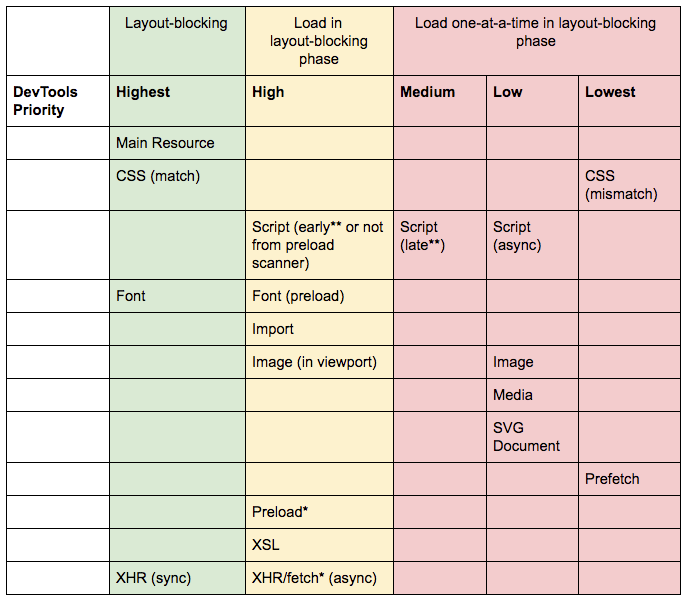
这张表详见:Chrome Resource Priorities and Scheduling
这张图表示的是,在 Chrome 46 以后的版本中,不同的资源在浏览器渲染的不同阶段进行加载的优先级。 在这里,我们只需要关注 DevTools Priority 体现的优先级,一共分成五个级别:
Highest 最高
Hight 高
Medium 中等
Low 低
Lowest 最低




CSS(match) 指的是对已有的 DOM 具备规则的有效的样式文件。
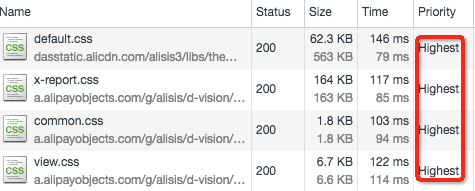

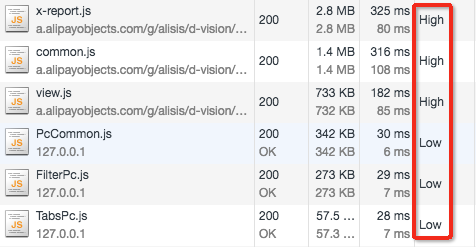
前三个 js 文件是写死在 html 中的静态资源依赖,后三个 js 文件是根据首屏按需异步加载的组件资源依赖,这正验证了这个规则。


样式文件中有一个 @font-face 依赖一个 font 文件,样式文件中依赖的字体文件加载的优先级是 Highest; 在使用 preload 预加载这个 font 文件时,若不指定 crossorigin 属性(即使同源),则会采用匿名模式的 CORS 去加载,优先级是 High,看下图对比: 第一条 High 优先级也就是 preload 的请求:
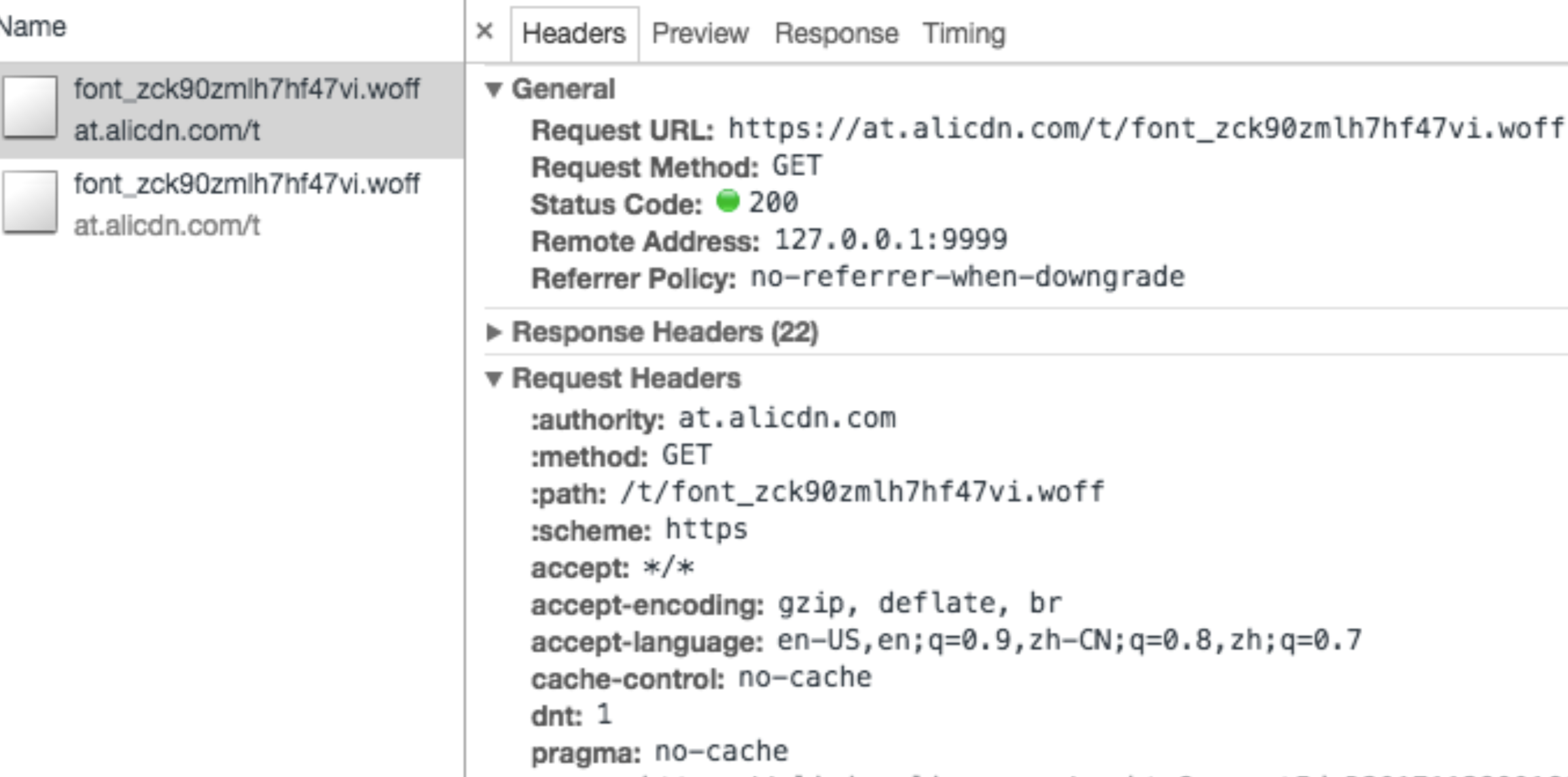
第二条 Highest 也就是样式引入的请求:
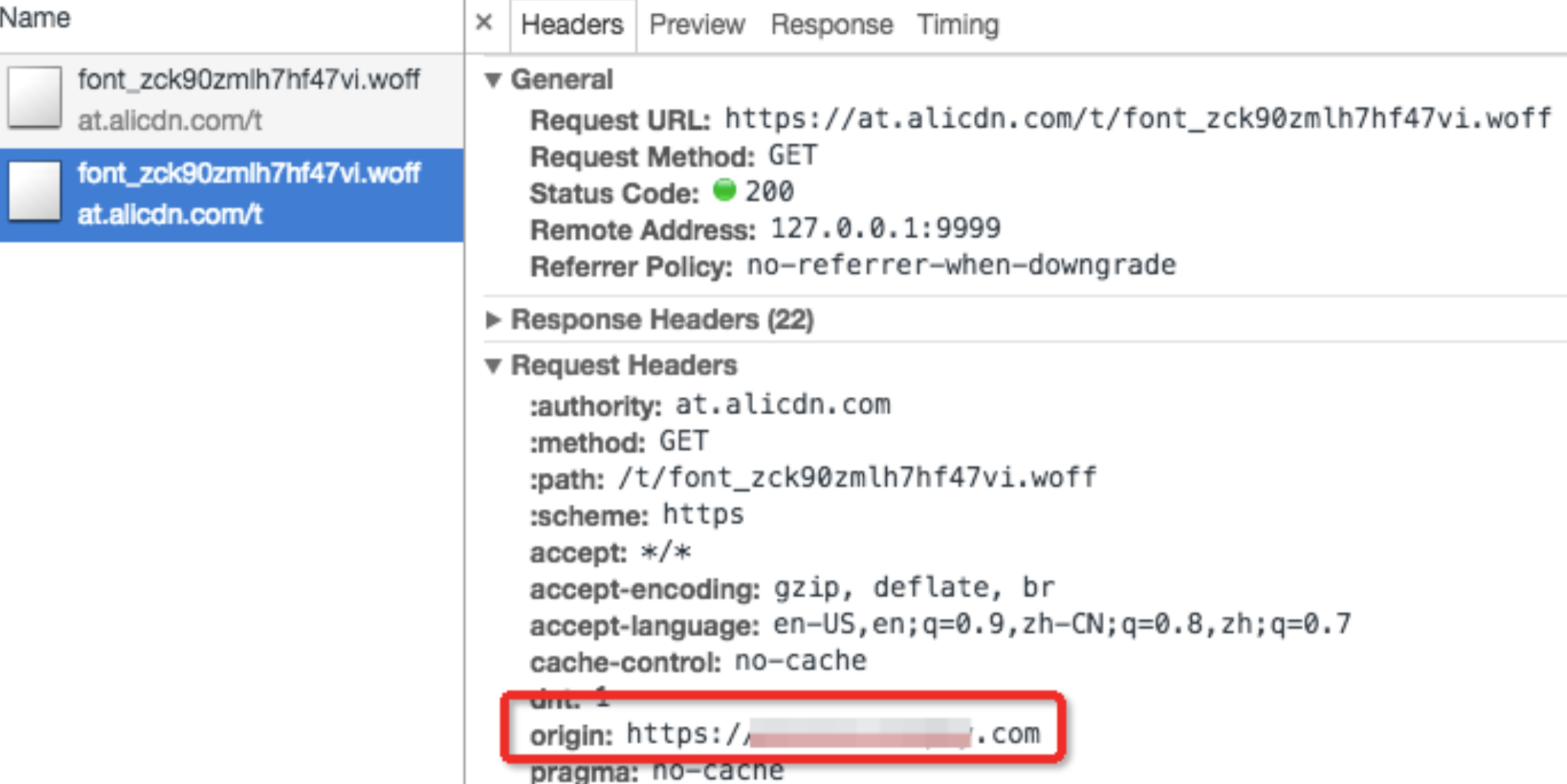
可以看到,在 preload 的请求中,缺少了一个 origin 的请求头字段,表示这个请求是匿名的请求。 让这两个请求能共用缓存的话,目前的解法是给 preload 加上 crossorigin 属性,这样请求头会带上 origin, 且与样式引入的请求同源,从而做到命中缓存:
<link rel="preload" as="font" crossorigin href="https://at.alicdn.com/t/font_zck90zmlh7hf47vi.woff" rel="external nofollow" rel="external nofollow" rel="external nofollow" rel="external nofollow" rel="external nofollow" rel="external nofollow" >
这么请求就只剩一个:

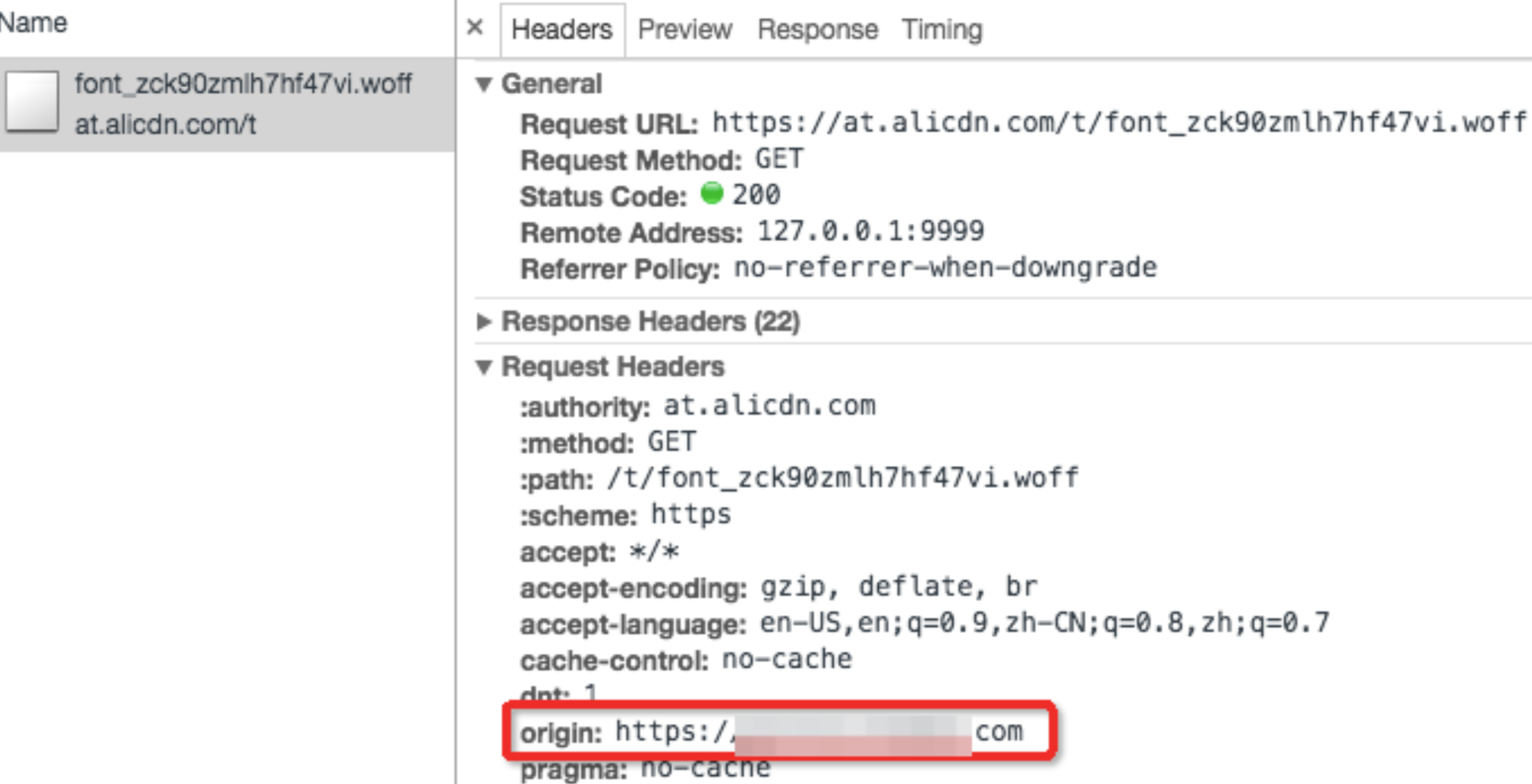
在网络瀑布流图中,也显示成功预加载且后续命中缓存不再二次加载:

preload 是个好东西,能告诉浏览器提前加载当前页面必须的资源,将加载与解析执行分离开,做得好可以对首次渲染带来不小的提升,但要避免滥用,区分其与 prefetch 的关系,且需要知道 preload 不同资源时的网络优先级差异。
preload 加载页面必需的资源如 CDN 上的字体文件,与 prefetch 预测加载下一屏数据,兴许是个不错的组合。
更多关于preload预加载页面的文章大家可以看看下面的相关链接
免责声明:本站发布的内容(图片、视频和文字)以原创、转载和分享为主,文章观点不代表本网站立场,如果涉及侵权请联系站长邮箱:is@yisu.com进行举报,并提供相关证据,一经查实,将立刻删除涉嫌侵权内容。